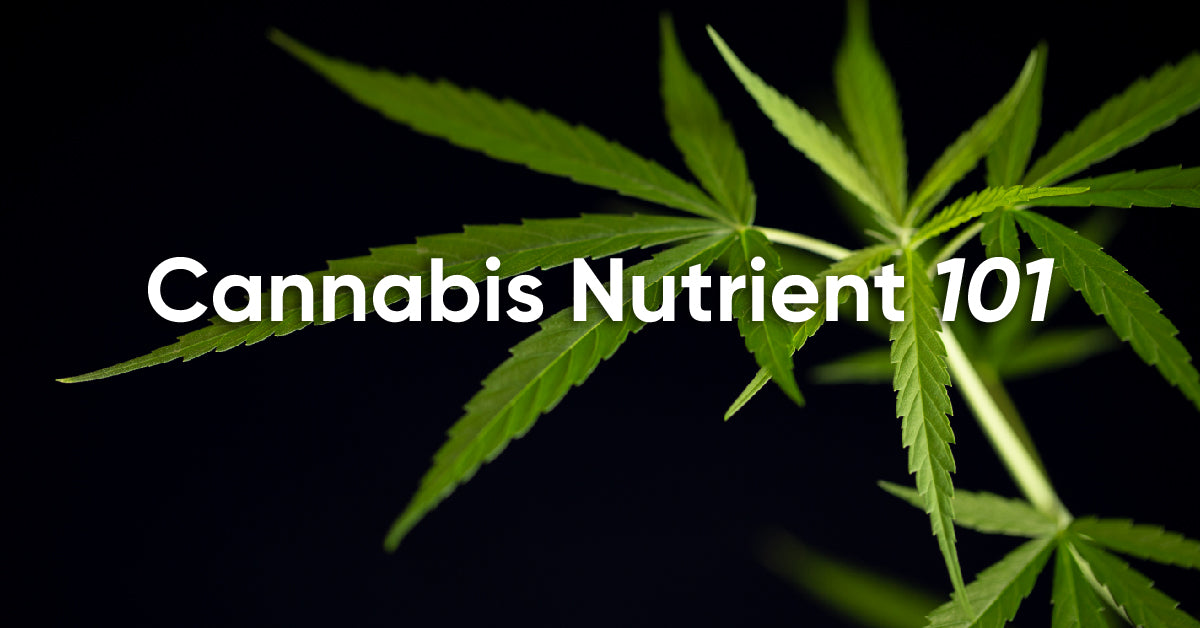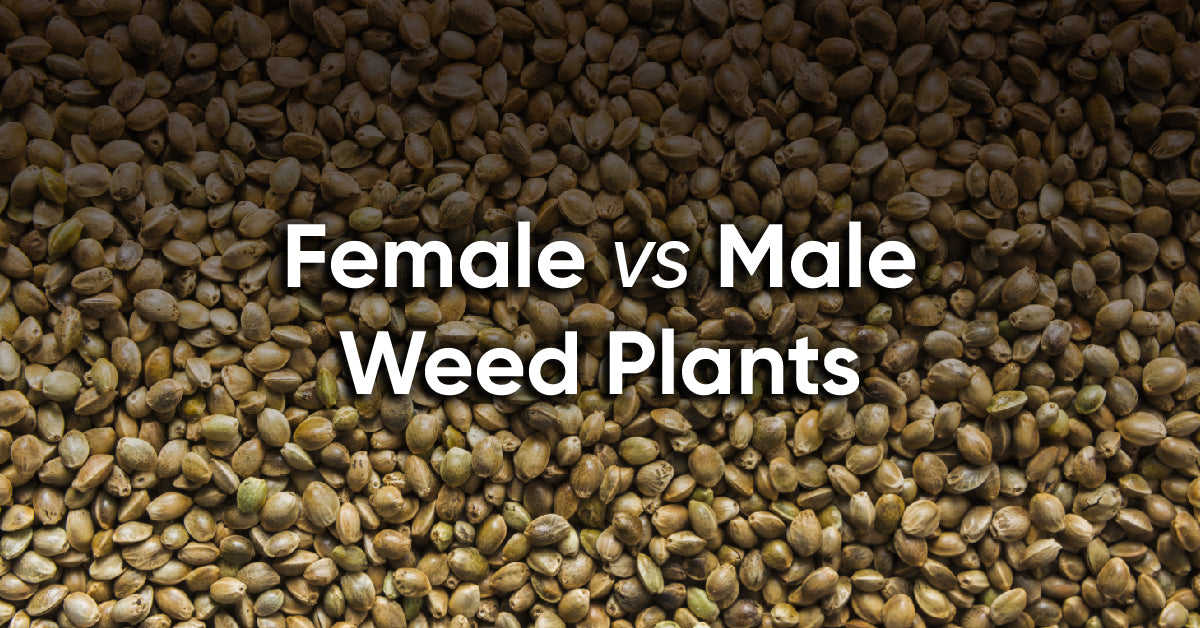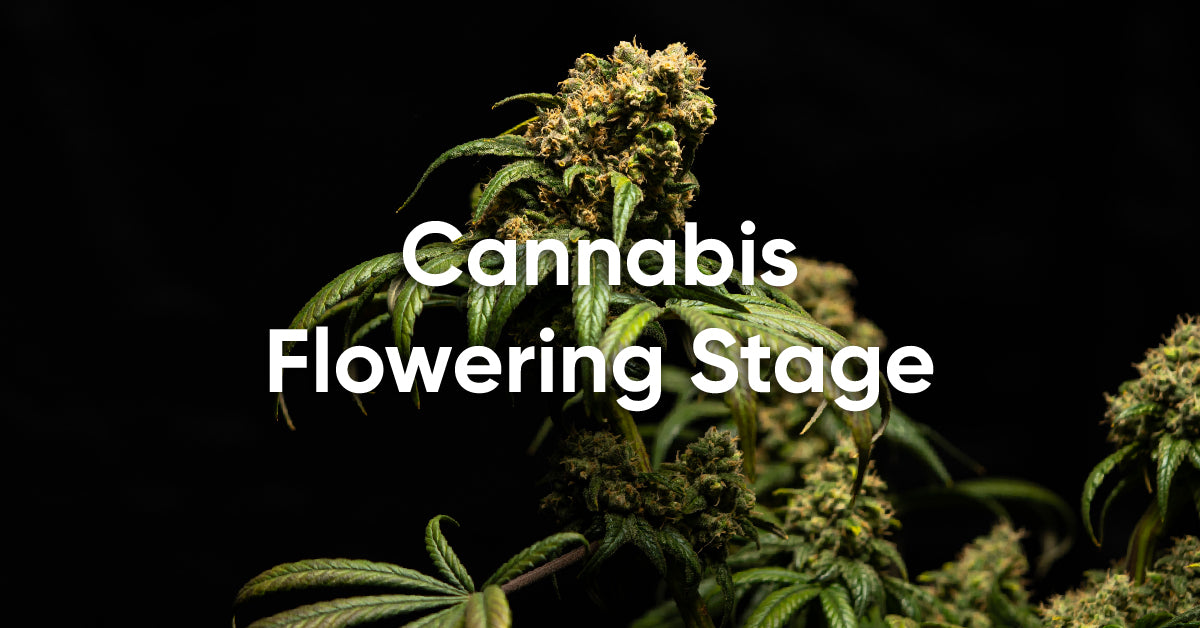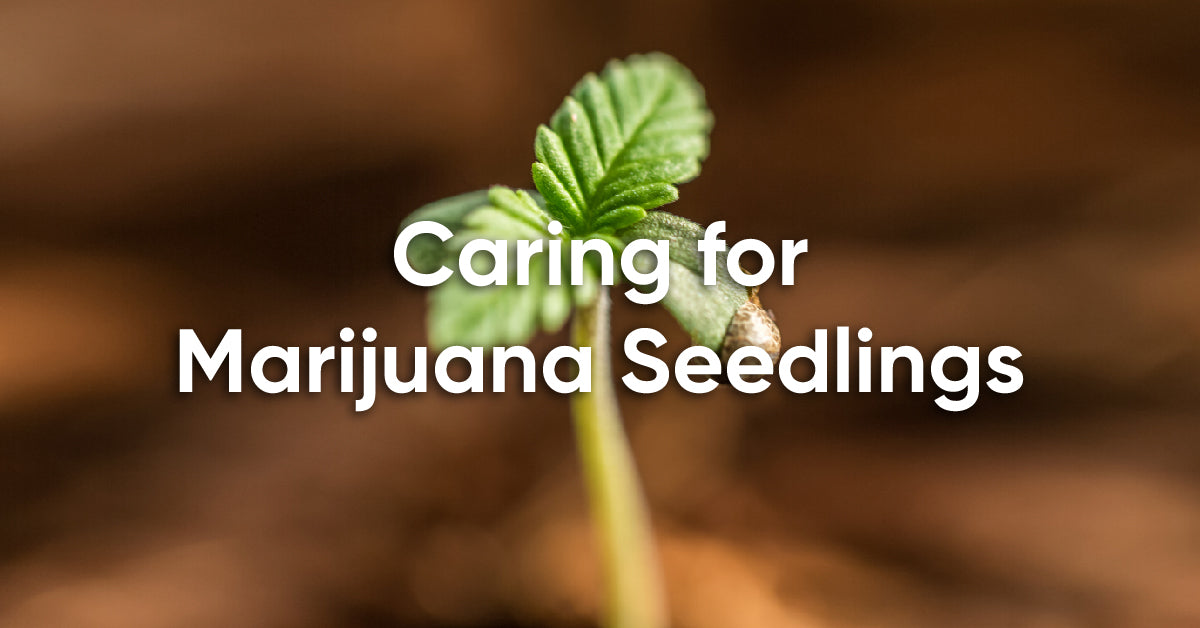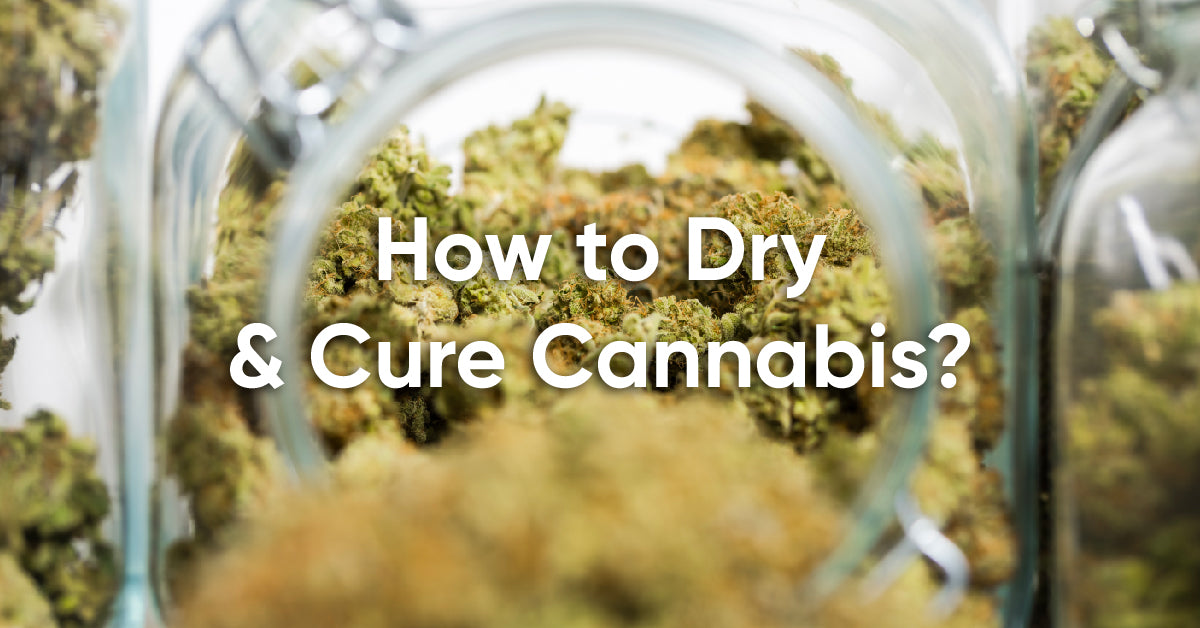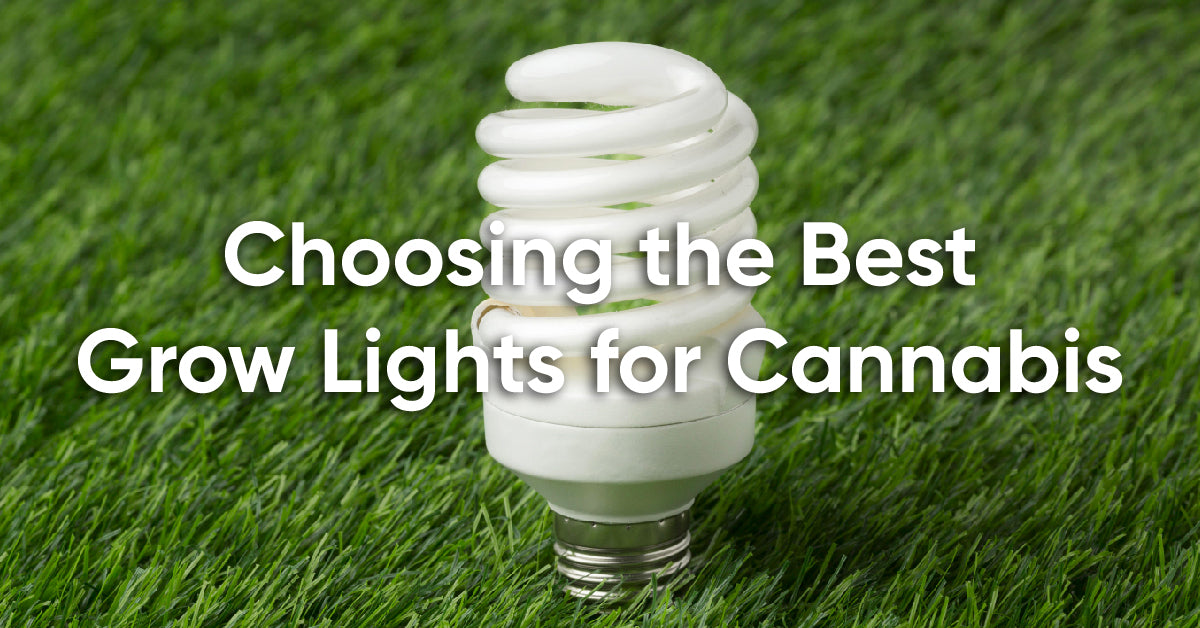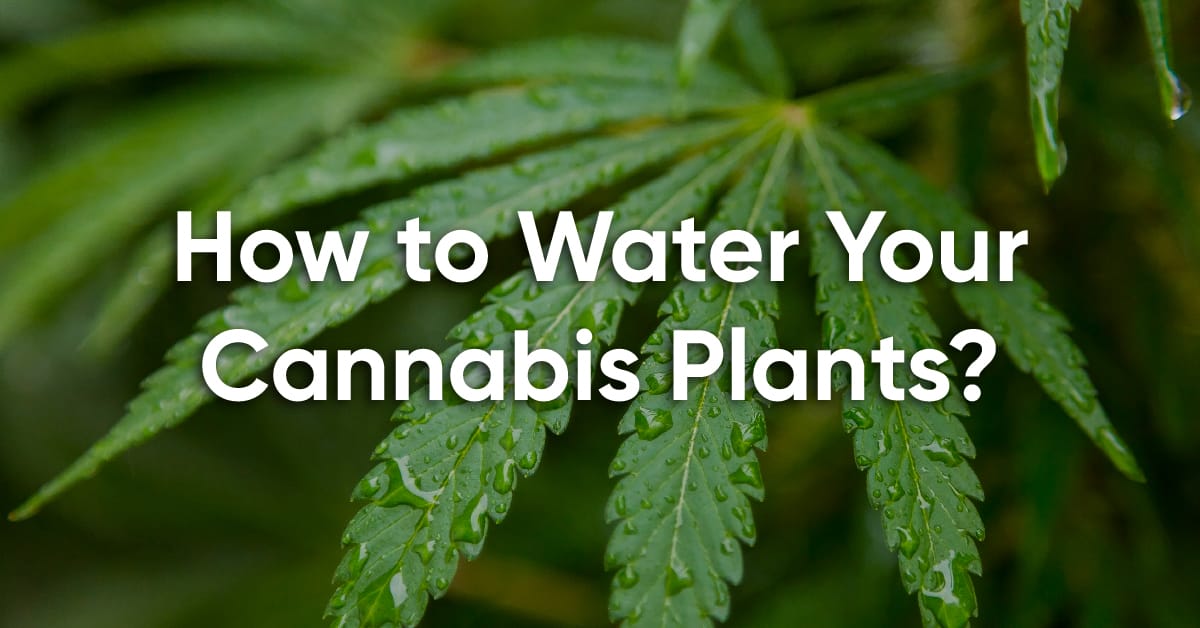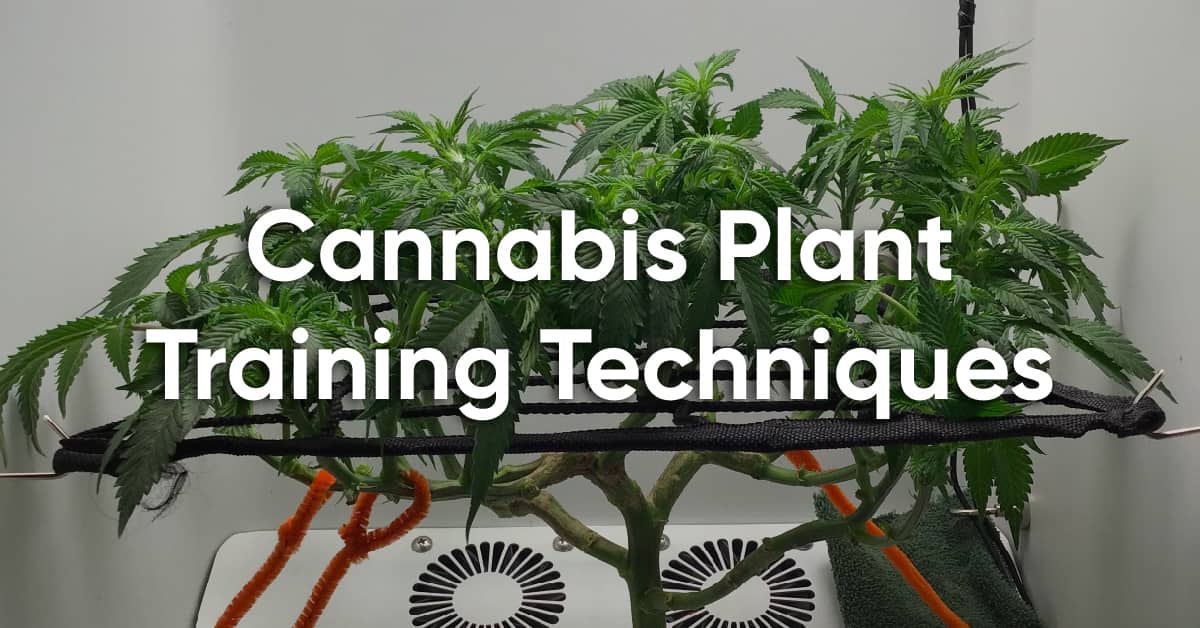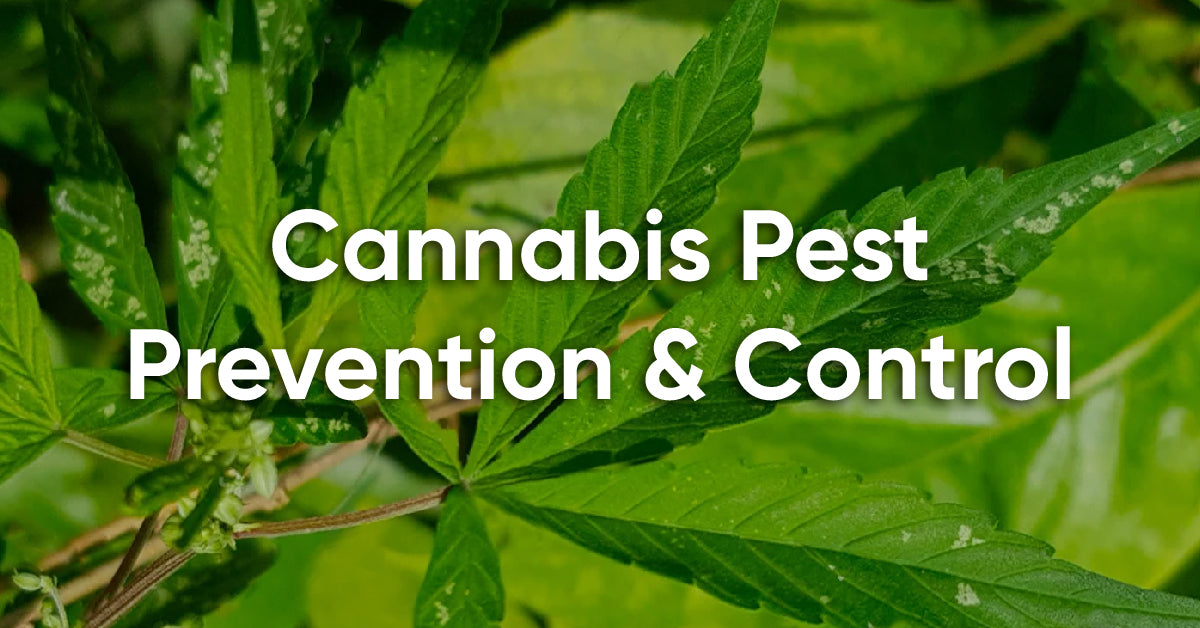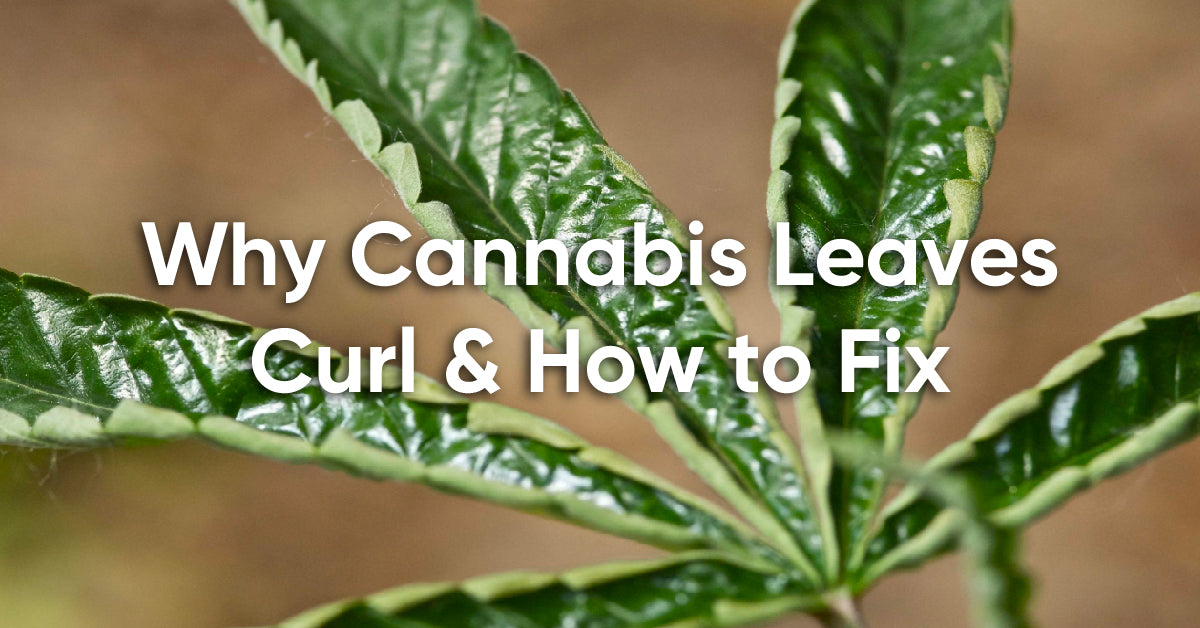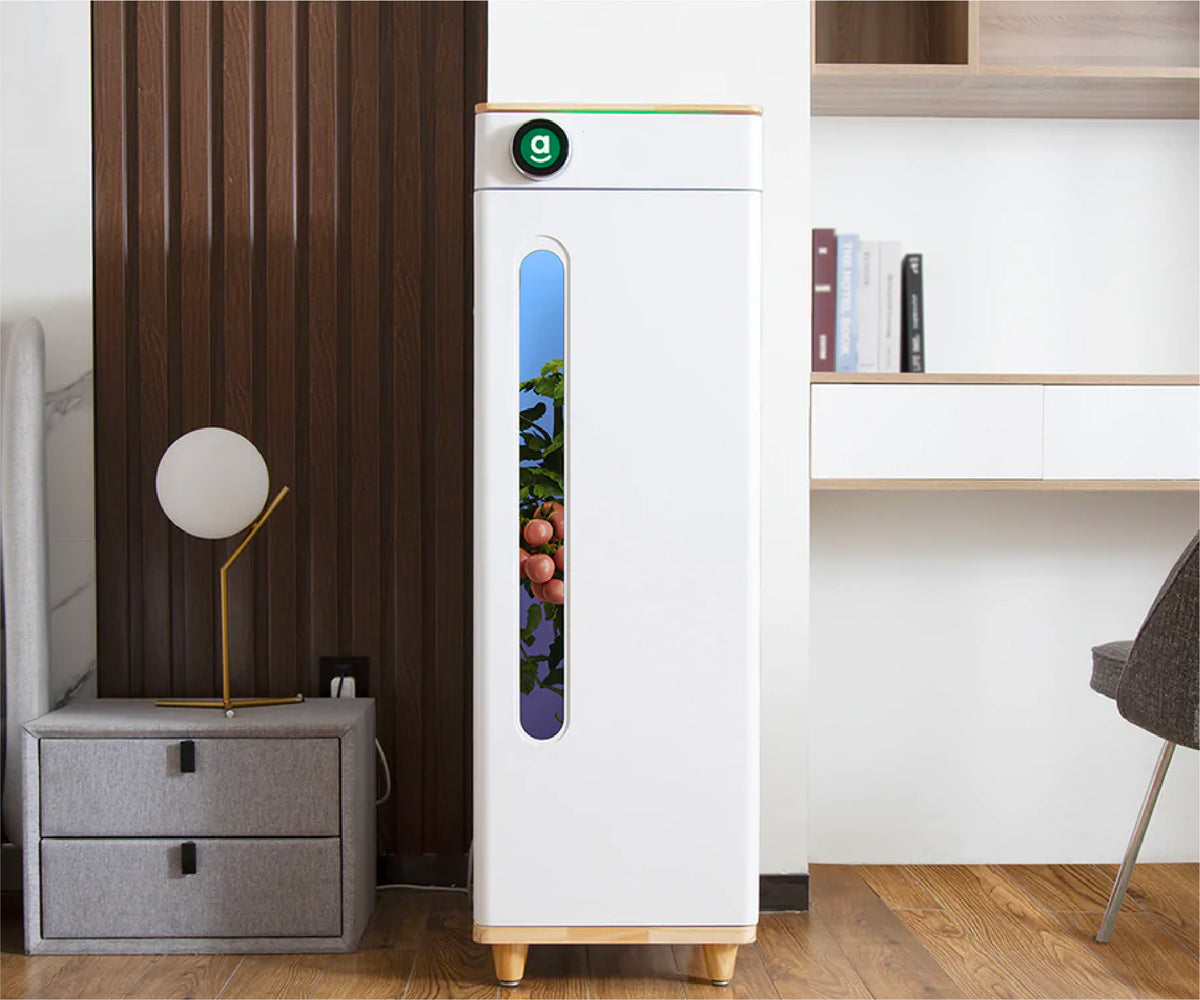How to Grow Marijuana Indoors: The Ultimate Guide
Growing marijuana indoors is gaining widespread popularity, as enthusiasts worldwide uncover the delights of nurturing their cannabis plants. Whether you're a medical user in need of a steady supply or a passionate cannabis aficionado eager to delve into home growing, this all-encompassing manual on how to grow marijuana will equip you with vital know-how and methods for achieving a thriving cannabis garden.
Starting with grasping the legalities and creating your ideal cultivation area, and then nurturing your plants across every growth stage, we'll plunge into every facet of the marijuana growing process. Within this guide, you'll gather invaluable insights and advice that will help you nurture top-notch cannabis right in your home.
Is It Legal to Grow Marijuana in Your Area?
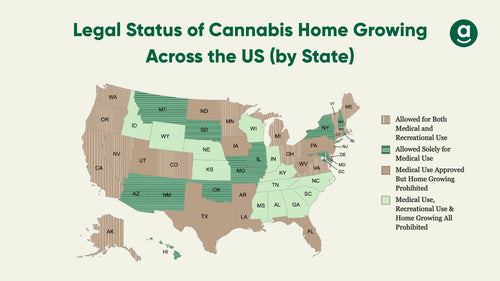
Regulations around cannabis cultivation have eased up in recent years, whether for recreational or medical purposes. But here's the deal: the guidelines for growing cannabis at home can be totally different depending on which state you're living in.
That's why it's always crucial to be aware of your local regulations and stay within the legal boundaries. Getting caught growing marijuana outside the legal lines can lead to some seriously bad times—picture major fines or even ending up in some legal hot water.
Before you kick off growing, you can delve into our comprehensive guide on marijuana growing regulations for the US, Canada, and Australia.
Top 6 Factors Affecting Your Marijuana Growing

Every cannabis plant needs the following things in order to survive and thrive:
- Light: Regardless of what you're using, cannabis grow light or sunlight, you must know there're different spectrum and intensity required in different growth stages. Cannabis plants love more blue light with low to mid intensity during the veg stage, whereas they prefer red light with higher intensity while flowering.
- Air: For the best result, you may need a space that has good air circulation and a mild breeze.
- Growing Medium: That is the place where your grow the weed plant. Soil-based growing is very common, but growing cannabis hydroponically brings higher yields.
- Temp: Remember, if it's too hot or cold for you, your cannabis plants are feeling the same way. Don't throw them in any environment with extreme temperatures.
- Water: Every life form needs water to live, and there's no exception for your weed plant.
- Nutrients: Nitrogen (N), phosphorus (P), and potassium (K) are the three basic cannabis nutrients that the plants require during its growing process. You can purchase pre-made cannabis fertilizers.
Which Cannabis Strains Should You Choose?
When it comes to how to grow marijuana, choosing the right cannabis strains is crucial for a successful cultivation journey. The selection of strains ranges from sativa to indica and hybrids, each offering unique characteristics and effects that are essential to consider when growing marijuana.
If You're Growing Cannabis for Medicinal Use
Think about your goals. Sativas are great for boosting appetite, focus, and productivity, while indicas are better for pain relief, relaxation, and sleep support.
Hybrid strains combine the qualities of both Sativa and Indica, providing a balanced experience that can vary depending on the specific genetics.
If You're Growing Cannabis for Recreational Use
Consider the effects and flavors you prefer. Sativas provide an uplifting, head-focused high with bright, citrusy, or fruity aromas. Indicas, on the other hand, deliver a more sedating, body-heavy experience with earthy, musky scents. Hybrids offer a mix of both, with a wide variety of effects and flavors.


Indica (left) & sativa (right) cannabis strains in Hey abby
Indica (top) & sativa (bottom) cannabis strains in Hey abby
Growing Marijuana Indoors vs Outdoors
Indoor Marijuana Growing
Benefits
- Control: Indoor cultivation offers precise control over environmental factors such as light, temperature, humidity, and airflow. This control allows for year-round growth regardless of external conditions;
- Strain Variety: Indoor growing allows you to cultivate a broader range of cannabis strains that might not thrive in your local outdoor climate;
- Privacy: You'll enjoy enhanced privacy and security, keeping your cultivation away from prying eyes and potential theft;
- Pest and Disease Control: Growing marijuana indoors reduces the risk of pests and mold, helping you maintain a healthy crop.
Considerations
- Energy Consumption: Indoor growing consumes more energy due to artificial lighting and climate control systems.
- Cost: Setting up an indoor grow space for weed plants requires an initial investment in equipment. The two leading options for indoor growing are tents and grow boxes. For traditional tent growers, they'll also need to separately purchase lights, fans, and ventilation systems.
Outdoor Marijuana Growing
Benefits
- Natural Sunlight: Outdoor cultivation benefits from the full spectrum of natural sunlight, leading to potentially larger yields and richer cannabinoid profiles;
- Cost: Growing marijuana outdoors is generally more cost-effective as you don't need to invest in a set of equipment;
- Size Potential: Outdoor weed plants can reach larger sizes, potentially leading to higher yields if you have sufficient space;
- Sustainability: Growing marijuana outdoors has a lower carbon footprint as it relies on natural sunlight and doesn't consume as much energy.
Considerations
- Climate Restrictions: Outdoor cultivation is limited by your local climate and seasonal changes;
- Pest and Disease Risks: Plants grown outdoors are more exposed to pests and diseases, requiring proactive measures for prevention.
How Long Does It Take to Grow Weed?
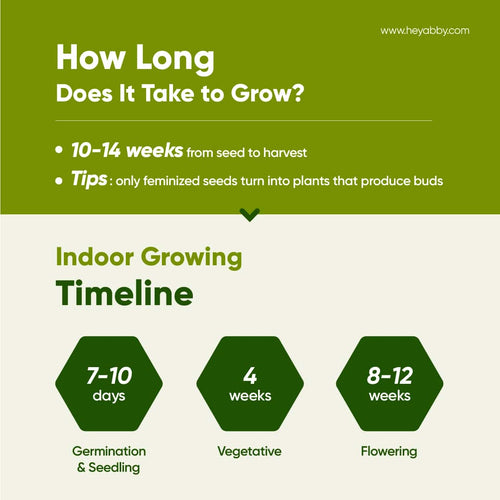
When it comes to how to grow marijuana indoors, one common question that arises is, "how long does it take to grow weed?"
On average, the journey from seed (only feminized seeds turn into plants that produce buds) to harvest spans roughly 10 to 14 weeks. However, this timeline is just an estimate, and it can be influenced by the aforementioned factors.
Furthermore, different strains have varying growth rates and flowering durations when growing marijuana. Some strains mature faster, allowing for a shorter cultivation period when you grow weed plants indoors, while others require more time to reach their peak. As growers learn how to grow marijuana, it's essential to explore and comprehend the unique needs of their chosen strain to ensure optimal care and outcomes.
More Guides to Growing Marijuana
Recommended Temperatures, Humidity & pH Level
When you grow with a Hey abby marijuana grow kit, we suggest aligning your cultivation environment with the following guidelines.
- Seed: 60-110°F; no restriction for humidity and pH level
- Vegetative: 70-90°F; 40-60% Relative Humidity; 5.5-6.4 pH
- Flowering: 70-90°F; 35-55% Relative Humidity; 6-6.4 pH
Stages of Growing Marijuana Indoors
Stage 1: Germination & Seedling (or Clone)

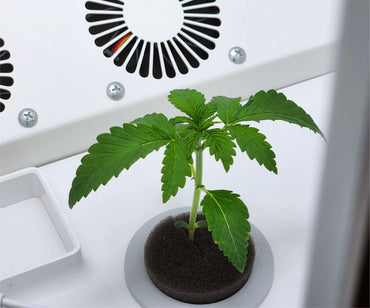
How you start your grow—seed or clone—can impact your timeline and results.
If you're starting from seed, germinating a seed usually takes anywhere from 3 to 15 days. Once the seedling develops its second set of leaves and strong root growth, it's ready to be transplanted. We recommend using the Hey abby seed kit which greatly increases your chance of successful germinating. The seed kit also makes sure you easily transplant the seedling into your grow box kit.
Using a clone instead? Clones typically take about 8 to 15 days to establish roots. Once rooted, they’re ready to be moved into your chosen growing medium—whether that's soil or a hydro setup.
Marijuana seedlings generally take about two weeks after sprouting to enter the vegetative stage. Clones, on the other hand, can hit veg in just 7–10 days and tend to grow faster right out of the gate.
While seeds may take longer, they often carry stronger genetic potential. Clones offer more predictability—especially if sourced well—since they’re guaranteed female and known to produce consistent, high-quality buds.
Stage 2: Vegetation


The weed vegetative stage is all about growth—this is when your cannabis plant builds leaves, branches, and height. Indoors, this vegetative stage typically lasts 3–8 weeks, while outdoor grows can stretch up to 12 weeks.
Here're some key needs of your marijuana plants during veg:
- Light cycle: 18 hours on / 6 hours off
- Light intensity: Medium to high
- Water pH: 5.5–6.0 (hydro) or 6.0–6.6 (soil)
- Nutrients: Gradually increase feeding strength (PPM/EC)
- Airflow: All leaves should gently flutter
As your plant grows, increase both the light intensity and nutrient levels little by little. You’ll also need to water more frequently—but don’t overdo it. Droopy leaves or slow growth could be signs of overwatering, so let the medium dry out a bit before your next watering.
Consistent airflow is key. As the plant gets bigger, proper ventilation helps with transpiration and keeps nutrients moving efficiently. If your leaves are lightly fluttering, your airflow is in the sweet spot.
During the veg stage, growers can utilize various techniques such as topping, pruning, Low Stress Training (LST), SCROG, and lollipopping to shape the plant, control its size, and limit its height to increase yields.
These techniques ensure even growth and prevent the plant from becoming too bushy, which could limit airflow and light penetration in the lower sections of the plant. LST is also beneficial in spreading out the branches, allowing for more light exposure and an even canopy. By carrying out these techniques during the vegetative stage, growers can create a robust and healthy plant that is ready for a productive flowering stage.
Stage 3: Flowering
The cannabis flowering stage is when your cannabis plant starts developing buds—and it’s the most important part of the grow. This phase usually lasts between 8 to 11 weeks, depending on the strain and your grow conditions. To kick it off, you’ll need to change the light schedule from 18/6 to a 12/12 cycle (12 hours of light, 12 hours of darkness).
For best results, it's recommended to maintain the pH level around 6.0~6.5, which will enhance the plant's ability to absorb calcium.
Weeks 1–3 (Early Flowering)


This is when the plant goes through its final growth spurt—often doubling in height. It’s a great time to add a trellis or netting to help manage the stretch. You’ll also notice the plant drinking and feeding more, so be ready to increase both water and nutrient levels. Boost light intensity and airflow to support healthy flower formation. Around this time, you’ll start seeing white hairs (stigmas) popping up at the bud sites.
Moreover, it's important to lollipop the plant in the early flowering stage to redirect the plant's energy towards the upper canopy where the buds are developing. The technique also helps to improve airflow and thus reduce the risk of moldy weed.
Weeks 4–7 (Bud Development)

By week 4, the vertical growth slows down, and the plant begins packing on bud mass. You’ll see the flowers getting denser and coated in trichomes (those frosty crystals). Aromas will start to build as the plant focuses more on resin production and less on growing new leaves or branches.
Weeks 8+ (Ripening)

In the final stretch, buds stop bulking and begin ripening. The white hairs darken to orange or brown, and trichomes shift from clear to milky, then amber. These visual cues help you time your harvest just right. This is when cannabinoid and terpene levels peak, giving your buds their final flavor, potency, and effects. Watching trichome color closely is the best way to know when to flush and harvest.
To determine if your cannabis buds are ready for flushing, follow these steps:
- Check the Trichomes: Use a magnifying glass, microscope lens or jeweler's loupe to inspect the trichomes on your buds. When the trichomes appear milky white or opaque, it's a sign that the buds are reaching their peak potency and it's time to start flushing;
- Check the Pistils: Examine the pistils, or hairs, on the buds. If the majority of the pistils have turned from white to brown or orange, it's another indication that the buds are reaching maturity and are ready for flushing.

Once you have determined that your buds are ready for flushing, it's recommended to flush the plant with pH-balanced water for at least 3-7 days before harvesting. This will help to remove any excess nutrients from the plant and improve the overall taste and quality of the buds.

Expert Growing Guidance
Connect directly with our team of growing experts in a chat to get your cannabis plants back on track.
Let's Chat!Stage 4: Flushing
The cannabis flushing process typically lasts for 3-7 days, during which you should stop adding nutrients to your plants and provide them with only pH-balanced fresh water. This allows your plants to absorb any remaining nutrients in their system. Proper flushing improves the quality of your smoking experience.
To assess if your buds are ready for harvest, look for the following signs:
- Leaf Color: The fan leaves will then start to fade, which indicates that it is ready to harvest.
- Trichome Color: Trichomes are the small, crystal-like structures on the buds. When they turn from clear to cloudy, it is a sign that the buds are reaching maturity. If you want a more relaxing effect, wait until the trichomes turn amber.

Tips:
- The peak THC content in cannabis buds is typically reached when the trichomes have turned from clear to milky. On the other hand, more mature trichomes that have turned from milky to amber may indicate higher levels of CBD, which can lead to a "harsher" smoke characterized by more coughing.
- Use a magnifying glass or jeweler's loupe to inspect the pistils and trichomes closely. This will help you see the color and clarity of these structures more clearly.
Once you have completed the flushing process, it's time for harvest!
Stage 5: Harvest & Drying
Harvest
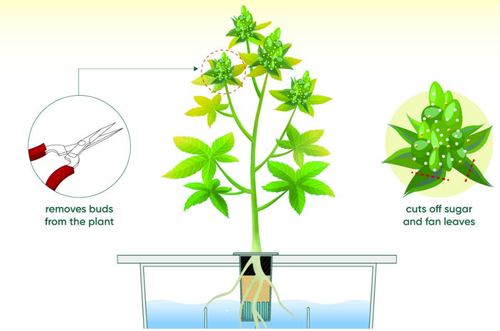
Harvesting is the final stage of growing cannabis. After your plant has matured and been properly flushed, it’s time to chop it down—usually at the main stalk, close to the medium.
Harvesting cannabis buds is a delicate process that requires patience and attention to detail. Follow these steps for a successful harvest:
- Prepare your tools: Gather sharp, clean scissors or pruning shears, gloves, a drying rack, and paper bags or glass jars for storage.
- Choose the right time: Look for signs that the buds are ready for harvest, such as the color of the trichomes and the fading of the fan leaves. It's important to harvest at the right time for the best results.
- Protect your hands: Wear gloves while trimming cannabis to avoid your hands getting covered in sticky resin.
- Cut the branches: Use your scissors or pruning shears to cut the branches just above the main stem of the plant. Be gentle and try not to damage the buds or the plant itself.
- Remove the fan leaves: Once you have cut the branches, remove the large fan leaves. This will make it easier to see the buds and improve airflow during the drying process.
- Trim the buds: Use your scissors or pruning shears to carefully trim the buds from the branches.
Drying
Once harvested, drying the cannabis buds is the next critical step. Many growers overlook it, but poor drying can ruin all your effort. We recommend cutting the plant into medium-sized branches and hanging them with some space between each, so they dry evenly. You can also use a cannabis drying rack if preferred.
Aim to dry your cannabis in a space kept around 60°F (15°C) with 60% humidity. Avoid rushing this stage—drying should take at least 7 days, typically 1-2 weeks. This gives enough time for the chlorophyll to break down, which helps avoid that grassy or hay-like smell in the final product.
To check if it’s done drying, try the “snap test.” Bend a medium-sized branch—if it gives a clean snap, it's ready for curing. If not, it needs more time to dry.


drying cannabis in Hey abby grow box
If you're using Hey abby grow box, just activate the drying mode. This mode turns off the grow light and sets the exhaust fan to a low speed, as suggested by the Abby algorithm. It allows for a slow and gentle drying process that prevents the buds from becoming overly dry or crumbly, which could result in a harsh smoking experience.
To check if your buds have been dried properly, perform the bending test. Take a small branch and bend it. If it snaps, your buds are ready to go.
Stage 6: Curing


Curing cannabis is the process of preserving and improving the flavor, aroma, and potency of buds after they have been dried. Proper curing can also extend the shelf life of buds for up to two years without a significant loss of potency.
The process involves storing the buds in an airtight container at a specific humidity level of 55-65% RH for 1-4 weeks. Burping the container is necessary to prevent mold growth when humidity levels rise above 65%. After curing, it is best to store buds in a cool, dark place to avoid mold and mildew growth and buds can last for two years with potency.
Hydroponic vs Soil Cannabis Growing
There are two main methods for growing weed: hydroponics vs. soil. Hey abby offers various models to accommodate both methods. You can consider the pros and cons of each approach before choosing the right Hey abby model for your needs.
Growing cannabis in soil usually appeals to purists and those who prefer a simpler and more natural approach. Soil provides a natural buffer and interaction with living organisms, which many believe leads to superior results and cleaner flowers. If you prefer soil, opt for the Hey abby Soil Edition.
On the flip side, hydroponics offers a soilless method using nutrient-rich water for plant growth. It's all about control, efficiency, and faster growth, making it attractive to growers aiming for precision and maximum yields. If hydroponic cannabis growing is your preference, consider Hey abby's 420 models and OG models. We've compared all the grow boxes to help you find the right one.
No matter which model you choose, all of Hey abby's grow boxes offer a hassle-free and efficient solution for those interested in how to grow marijuana. With no setup required, 24/7 automated control, 1-on-1 expert support, and detailed growing tutorials accessible through the Hey abby app (IOS/Android), you'll have everything you need to grow successfully.
What is the Average Yield in a Hey abby?


harvests from Hey abby's happy growers
With OG models, you can expect a yield of up to 8oz of dried buds per harvest over a three-month growth cycle.
Hey abby 420 models & Soil Edition, on the other hand, yields up to 6oz of dried buds. Regardless of the version you choose, your first harvest will cover the investment costs.
Simply make your decision based on your goals. No matter which Hey abby grow system you choose, each one is designed with ease of growing in mind, making it easy for anyone to start the grow and achieve consistently satisfying cannabis yields.
Final Thoughts
We're hornored to have a community of knowledgeable and empowered growers, who are passionate about cultivating cannabis at home, and sharing their tips and experience. Join us on Facebook Group to connect with these fellow growers!
We understand that learning how to grow marijuana can be a complex process, and we are here to assist you every step of the way. Whether you are a beginner or an experienced grower, our goal is to provide you with the knowledge and resources you need to succeed.
Get Weekly Expert Tips, and Grow Healthy Plants
Join our newsletter to get exclusive growing tips delivered directly to your inbox.
Grow Tent vs Grow Box: which growing system is best for beginners?
Small Grow Tent

Grow Tents are made up of collapsible material (usually nylon or polyester) that are fitted to frames, creating a large space for your plant to grow. The tent comes with holes and fittings that enable you to attach lights, fans and filters. This combines to help your plant grow inside of its pots on the ground, essentially creating an electronic indoor greenhouse.
The tent is often larger than the Grow Box and requires more space, but this gives you the option to grow more. The Grow Tent is usually not suitable for all home environments due to its size and non-discreet design. It is more suited to a garage, basement or spare room. The grow tent doesn’t come pre-assembled and requires the user to fit the components together, including the frame, lights and fans.

Grow Box

Grow Boxes are self-contained ecosystems for your plant that include lighting, fans, and feeding docks. They come pre-assembled so there is no set-up required. Everything a plant needs to grow is built within the device. Growers are free to customize their Grow Box as they wish, but this is completely optional and not necessary for a successful harvest. This makes the Grow Box ideal for beginners and those looking for low-maintenance growing.
The Grow Box is usually a lot smaller than the Grow Tent, enabling growers to grow plants in any home space. With a design similar to that of an air purifier or cabinet, the Grow Box can blend into the home environment discreetly. A Grow Box focuses on one plant at a time, providing a bespoke experience to that one particular plant. Due to their compact design, plants growing inside a Grow Box will require more purning and low-stress training, in order to maintain the plant's wellbeing. Grow Boxes use hydroponic technology removing the need to use soil.
Grow Tent
abby
Assemble
Pieces to assemle
15+
Plug and play
Setup time
2-3 hours
5 minutes
Eco-System
Lighting Schedule
Manual
Auto with algorithm
Airflow
One set
Auto with algorithm
Environment Monitoring
Add on different meters
Built in sensors
Water Flow
Manual Setup
Built-in water pump and airstone
Growing
Switch Period
Manual Switch
One click switch
Nutrients
Measure and mix
Pre-measured and packed
Change Water
Manual
Built-in water pump
Grow Guide
No
1 on 1 expert support
Time Spend
2-3 hours/wk
5 minutes/wk
Smart home Features
Smart App
No
Hey abby app
Connectivity
No
Wifi + Bluetooth
Safety
Children Lock
No
Yes(in hey abby app)
Sight Protection
No
Auto-dim when door opens
Odor Control
Manual setup ventilation
Easy to replace carbon filters
Should I begin growing with a clone or seed?
Growers have two options when growing a plant: they can germinate a seed or they can use a clone, which is a replica of a Mother Tree. Both of which can be purchased from local dispensaries. Seeds will take longer to produce their yield, making clones the more efficient choice for those seeking faster results. It takes approximately 2-4 weeks less for clones to harvest. Seeds are also not contaminated from poor growing conditions, making them a pure beginning that the grower can control.
The clone has the potential to retain poor growing conditions from previous plants, so sourcing depends upon your trust in the dispensaries and that they are a reputable company. There are both male and female seeds. When purchasing seeds, make sure that the seeds are feminized, as these are capable of producing the sticky cannabinoid-rich bud. If you use male seeds, they will not produce any bud. You can use multiple seeds and pick the best seedling, but this can be costly, so many growers prefer to germinate one at a time.
Different types of seed: Photo vs Auto
There are two main types of seeds: photoperiod and autoflower. Both are capable of producing cannabis and providing quality yields. However, both have their own unique advantages as well which may impact which seed you prefer as a grower.
Auto seeds grow at a far higher speed and are generally easier to cultivate. However, while photo are slower to grow they do produce higher yields. This difference is based on how the plants initiate the flowering stage. Auto will flower automatically using the light schedule, using 18 hours of light and 6 hours of darkness.
Photo will require a different lighting schedule when flowering, with 12 hours of light and 12 hours of darkness. This must be done manually inside of a Grow Tent, but with the Hey abby Grow Box it is done automatically for you. Auto seeds are also smaller and don't require as much pruning. This makes them more ideal for beginners.
Different types of strains: Sativa vs Indica
Most people classify cannabis into two main strains: Sativa and Indica.
Indica
Indica usually grows in cold, high climates. They require less time to harvest and develop bushy and short yeilds. They are said to provide a more relaxed experience when smoked.
Sativa
Sativa provides a more energized experience. Designed more for warm climates, sativa takes longer to harvest. They also grow long and thin, which doesn't make them ideal for growing in Grow Tents and Grow Boxes. We advise growing indica strains as they grow more ideally for indoor growing.

